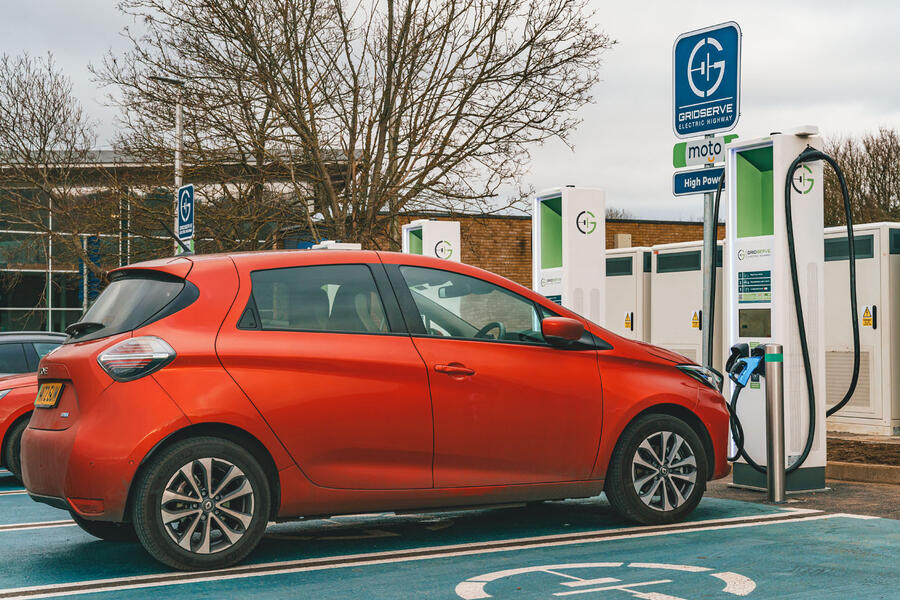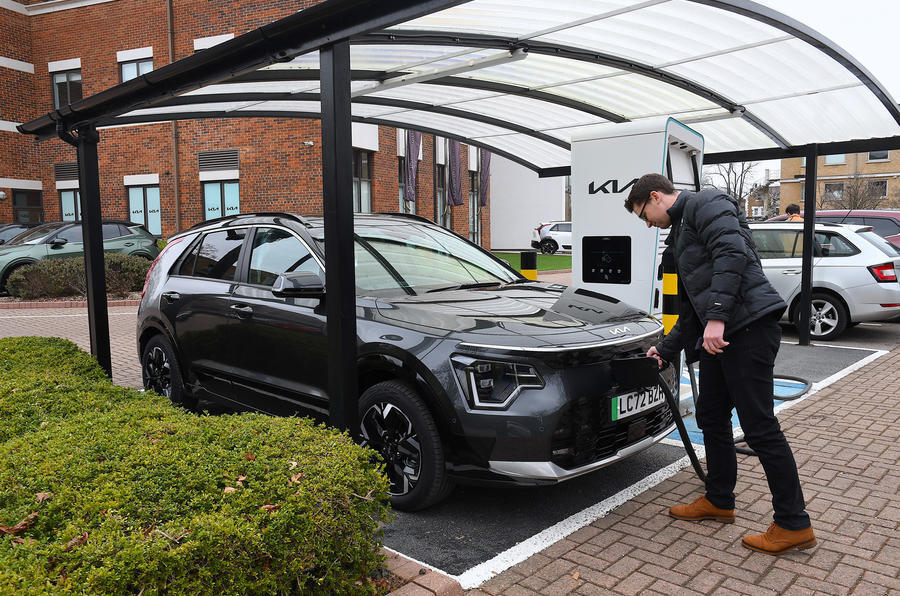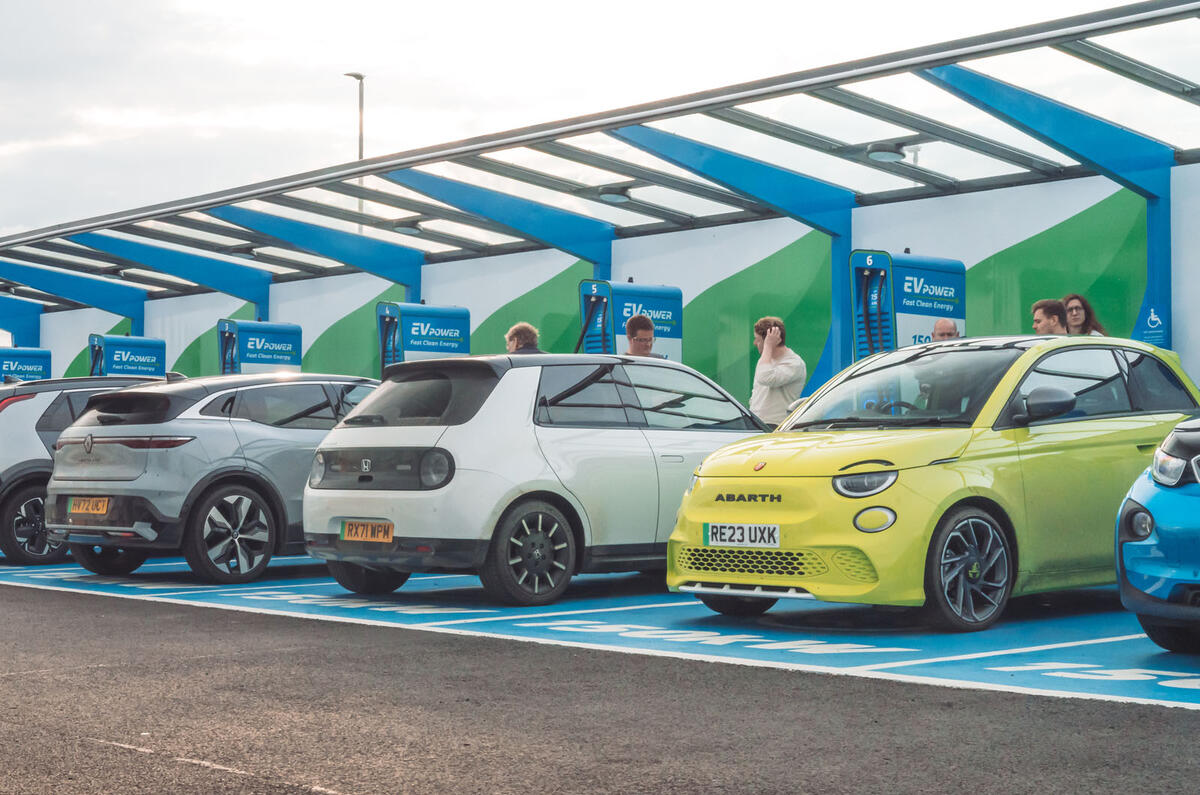The “incredible” rate of growth in the UK’s EV charging sector in recent years is “a huge British success story” that sets the industry up to cater to a drastic uptick in demand by the end of the decade - but the new government must work with charging firms to keep it on track.
That’s according to Vicky Read, CEO of industry body ChargeUK. She told Autocar that the network is on its way to achieve a targeted 300,000 chargers across the country by the end of the decade but called on the new Labour government to unlock crucial funding, incentivise EV uptake and remove installation obstacles in order to sustain the growth rate.
ChargeUK was formed to serve as a representative body for EV charger operators and counts a number of the country's biggest networks among its members, including BP Pulse, Fastned, Gridserve, Ionity and Osprey.
Giving an update on the state of the charging industry, Read said: “Actually, we're doing pretty well. The sector is only probably just over a decade old. It's actually a huge growth sector – probably a huge British success story, actually.”
She pointed to the latest figures from charger mapping firm Zapmap, which show there were 66,779 devices in operation at nearly 35,000 sites at the end of July, compared with 10 years ago when there were “virtually no charge points”.
"We're in the mid-40% for year-on-year growth, month after month, and Zapmap is reporting that positive drum beat every month,” she added. “In fact, that growth rate is such that we worked out that there's a public charge point being deployed every 25 minutes. So that's quite some growth.”
Add that number of public devices to the circa-870,000 private chargers currently in operation and there's nearly a plug for each of the 1.1 million EVs currently on UK roads.

The relationship between the number of EV chargers and EVs themselves is under particularly intense scrutiny at the moment, as the UK’s zero-emission vehicle (ZEV) mandate will drastically increase the proportion of EVs that each manufacturer sells over the coming years, and the new government has floated the idea of banning new ICE car sales in 2030.
But Read is unperturbed: "We feel that we're doing our bit and actually the outlook for going forward is positive.”
If the growth rate continues, there will be more than 300,000 devices operational by 2030, she estimated.
Indeed, Ian Johnston, who runs Osprey, recently told Autocar that while headlines around charging have been prevailingly negative in recent years, "what has actually been happening on the ground in the last 18 months is a quite astonishing roll-out of charging infrastructure".
As for whether the industry is getting enough government support, Read says the UK charging industry is “still getting to know the new team” at number 10 but added that “as a whole, the charging sector has been engaged with well, the role we play in the transition is understood and the progress we're making is acknowledged".
It's chiefly up to the new administration, she said, to address several "delivery barriers" preventing any acceleration in this sector. The growth so far, she said, “has been achieved with the brakes on, really".
Read said challenges in obtaining planning permission, grid connections and highway operation permits are limiting the speed at which new chargers can be deployed, and in some cases the devices themselves "can be sat there for a number of months before they're ready to go".
She added, though, that "the last government were very good at acknowledging" these "niggly issues" and said ChargeUK is "really hoping to pick that conversation up with a new government and remove all those obstacles".

Read is confident that the forecasted expansion of the UK's charging network can be largely achieved with private investment, pointing to the more than £6 billion that has already been committed to the sector by ChargeUK members through to 2030.
"We know that public finances are tight, and we want to make sure that taxpayers' money is being used sensibly," she said.
In line with that ambition, Read called for clarity over the status of two funds announced by the previous government that "have stalled somewhat".
The first of these is the Rapid Charging Fund (RCF), announced three years ago, which allocated £950 million to increase the number of fast chargers on the motorway network - but missed its target to install six 150-350kW devices at every service station by the end of 2023 and hasn't been officially tied to any distinct timeline or ambition since.
The other is the £450m Local Electric Vehicle Infrastructure (LEVI) fund, from which local authorities can obtain funding to install street-side chargers in their area.
Read said that "clarifying how public investment is being used really helps to unlock the potential of the private funding" and so called on the new government to "really speed up and clarify those two funds".
Crucially, these funds can also go some way to addressing the stark geographical imbalance that has opened up across the UK. The EV charger installation rate in London is far outpacing every other part of the UK, particularly the North.
In 2023, the number of chargers in the capital went from 152 per 100,000 people to 234 - well up on the 92 devices per 100,000 in the West Midlands and 72 in the North East.
"We're very alive to the fact that the roll-out is taking place at different paces in different places, and we're working really hard to address that," said Read, explaining that the LEVI and RCF are "aimed at helping us as a sector to plug those gaps".
However, she called on the procurement and planning departments of local authorities to work with the charging industry to "help identify the right places to roll out".
A recent study released by Vauxhall and the Cenex research consultancy found that adopting a more localised, targeted approach to infrastructure expansion could be the key to catering effectively to demand.
The report labelled the UK's infrastructure targets as "too wide in scope" and introduced new metrics to more precisely evaluate how effectively the UK charging network currently services demand.
For example, the report's new 'near home charging' metric determines whether supply of public chargers meets demand for the amount of households with no off-street parking in a given area.
According to the data in the report, 19% of all households who need one are currently within a four-minute drive of a charger.
Meanwhile, according to the 'journey charging' metric, which determines the extent to which each major road offers EV chargers, London's M25 motorway has just 65% of the chargers it needs and Manchester's M56 has just 20%.
Asked how the development of the charging network is being impacted by the adoption rate of EVs themselves, Read highlighted that the UK's ZEV mandate and forthcoming ban on ICE car sales will inevitably dramatically increase the proportion of EVs on UK roads and thereby the demand for public charging.
"We know that people need to see charge points out there before they make the decision to switch, and it may well be some time before those charge points are used at a level which is going to bring a return on investment, so we need to understand how that trajectory of the market is going to take place," she said.
"The ZEV mandate was highly consulted on and then a trajectory was set to be achievable, but it also performs an important role in giving us the confidence to invest."
Read acknowledged that the government could bring the previous administration's ICE car sales ban forward from 2035 to 2030 but said "we are on track to meet what's required by 2030, and if it does change back, we're ready".
Ultimately, though, Read added, charger operators still need sight of the projected trajectory of EV sales growth. "As with all big investments," she said, "we also like stability, so I think it would be good to have some clarity on that."








Join the debate
Add your comment
The ideology that we'll soon have chargers available for all EV adopters by 2030 is shear folly, the main infrastructure has to be up and running so that logistics can get the stuff we rely on for our everyday needs , then, the rest of road systems will be gradually brought up to what we need, that is going to happen by 2030.
I agree that the charging infrastructure on motorways and main trunk routes has improved enormously over the past couple of years, mainly because there are more charging hubs with multiple (and more reliable) rapid chargers - but it is only just keeping ahead of the increase in EV driver demand. It has also become very expensive (more costly per mile than filling your tank with fossil fuel). Slower ("fast") destination charging where there are most chargers is irrelevant for most drivers - I look upon it as just an opportunity for a top up if the cost is not too exorbitant. The big issue is there seems to be practically zilch progress on street charging for the 40% of motorists who don't have their own off street parking or are in rental or leasehold properties where the landlord cannot or will not permit the installation of individual fast chargers. There are continuing reports of obstructive local authorities who are either ideologically opposed to more street charging provision or just throw so much planning red tape at applicants that it becomes impossible to install charging facilities.
There is very little planning red tape when it comes to EV chargers, as most will fall under permitted development, this includes home chargers, on-street and commercial chargers. There are exceptions and these will be defined under your local council's planning policy. If there are any restrictions they will likely fall under what is dictated under an approved document, such as Document S, which comes under the remit of buildng control rather than planning. A charging station will likely fall under planning permission, but that will be for any buildings, road access or canopy over the chargers, rather than the chargers themselves.
As for those living in a rented property, then the lease should be consulted rather than what any lanlord may say, as the terms of this document will dictate what can or cannot be done, in many cases, the landlord cannot unreasonably withold permission, but you may be required to remove the charger and make good when you leave.
Pretty good success story, be interesting how the anti BEV moaners spin it.
I know, right, and only 1,400 million pounds of taxpayers money to get a so-so infrastructure that charges the public 10x the wholesale cost of electricity.
10p a litre (a penny a mile) overcharging? Try 50p a unit for these chargers - 15p a mile.